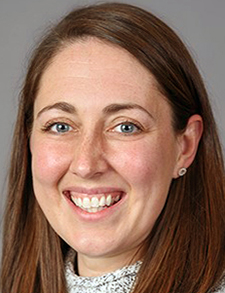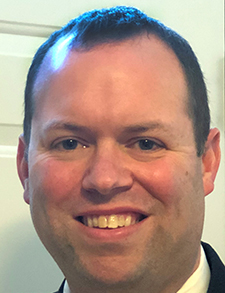 Hospitalists trained in both pediatric and adult medicine don’t always feel grounded as a comrade among either cadre of caregivers. Consider SHM’s Med-Peds Special Interest Group (SIG) that sense of belonging, according to the SIG’s leaders.
Hospitalists trained in both pediatric and adult medicine don’t always feel grounded as a comrade among either cadre of caregivers. Consider SHM’s Med-Peds Special Interest Group (SIG) that sense of belonging, according to the SIG’s leaders.

Dr. Peterson
“Med-Peds, because we live in two arenas, has struggled to find its home,” said SIG vice chair Rachel Peterson, MD, @MPAcadHosp, assistant professor of clinical medicine and pediatrics and a hospitalist at Indiana University School of Medicine in Indianapolis. “I would advocate for anybody out there who might identify with a med-peds hospitalist…sometimes it’s hard to find your home at the institution you work at. The goal of the med-peds SIG has always been to be a home away from home.”
Each of SHM’s SIGs fosters a community for like-minded hospitalists and associated practitioners. But perhaps none cater to a group as unique within a hospital’s walls as med-peds.

Dr. Fish
“When I first started my job and currently, I’m the only person at my institution who does it,” said SIG Chair David Fish, MD, SFHM, assistant professor of medicine and pediatrics at UMass Chan Medical School, Worcester, Mass. “So I was looking for a community of similar providers that would help me with career development and provide guidance for scholarly activities, as well as a group to be able to bounce ideas off of as I decided what kind of physician I wanted to be in the field of hospital medicine.”
From there, med-peds by training are often well suited to deal with medically complex patients.
“The med-peds hospitalist takes on a lot of the skillsets that complement each other well,” Dr. Fish said. “Sometimes managing the complexity of patients while also having a very patient- and family-centric approach makes it so we have that unique perspective that not only contributes to patient care but also leadership, in terms of helping align the priorities of an institution and a system.”
In many ways, Drs. Fish and Peterson look first to mentor early-career hospitalists, especially at institutions where they have no veteran med-peds doctor to serve as that sounding board. For Dr. Peterson, that desire to serve is the culmination of what the SIG meant to her when she joined four years ago.
“I was so happy to find a group where hospitalists were dealing with the same questions I was dealing with when I started as a med-peds hospitalist,” Dr. Peterson said. “I, like Dr. Fish, have a unique niche at my institution. While there are a few other people who do something similar, I have had to create my own path to care for the patient populations I wanted to. So, to see others who were also navigating their career paths, and doing that in different ways that brought them joy, it just made sense to join the SIG.”
“It’s been important for my career development to have that opportunity, to have that sounding board,” Dr. Fish said. To “learn areas where I can be a resource to my own institution, as well as on a bigger scale. Having that community of providers that have a lot of similarities both in their backgrounds, as well as in where their interests lie, has been really crucial to…making me into the physician I am today.”
Over the last few years, Drs. Fish and Peterson say med-peds proved their worth. One example is the Pediatric Overflow Planning Contingency Response Network (POPCoRN), launched in the pandemic’s early days by two physicians training in internal medicine and pediatrics. The idea was a collaboration that helped pediatric-focused institutions admit adult patients diagnosed with COVID-19 and other medical issues more commonly seen in adult populations.
That’s the kind of innovative, team-focused, and interdepartmental thinking that typifies a med-peds hospitalist. And there’s more where that came from, says Dr. Peterson.
“I think our work and our SIG’s work is to not just help with education, but also to help normalize the fact that we do have these young adults who are aging out of pediatric hospitals,” she said. “They’re coming into adult health systems, and their care needs to look different. It’s important that hospital leaders pay attention to the care they provide…they say 20% of patients account for 80% of the cost. This is a portion of that population.”
The dual nature of med-peds backgrounds means that the subspecialty’s practitioners work with SHM, the American Academy of Pediatrics, and the National Med-Peds Resident Association. Like in hospitals themselves, that sort of cross-community outreach is just another angle that helps define the uniqueness of med-peds.
“We try to make sure we’re a bridge and not a silo because we know what it’s like to work in silos,” Dr. Peterson said. “We find beauty and value in the flexibility and agility that med-peds people bring, and we want to continue to build on that with the work we do as a SIG.”
Richard Quinn is a freelance writer in New Jersey.